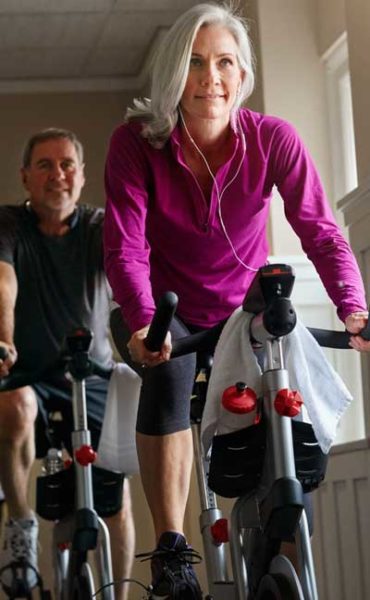The Shape of Things to Come
Feb. 11th, 2024 02:48 pmWith over 25 years in the saddle, that’s long enough to divide my cycling career into eras. And having just begun a new era in Austin, it might be interesting to see what a typical year looked like in the past, how my riding pattern has changed over time, and what it might look like in coming years.
You probably know that I’ve long tracked the daily variations of my cycling Fitness using a metric that is usually called Chronic Training Load, as explained here.
Looking back over the Fitness data I’ve collected, I’ve grouped the past 12 years’ riding into four “eras”. Those are:
- 4 years from 2012 to 2015, when I was living in Boston
- 3 years from 2016 to 2018, when I was living in Pittsburgh
- 4 years from 2019 to 2022, when I was still in Pittsburgh, but riding the indoor trainer through the winters
- And my best guess for how things will change here in Austin
The following chart plots my average/typical Fitness over the course of a year for each of those eras. Commentary follows, below.

Let’s start with the bottom, orange line. It shows my average Fitness over my last four years in Boston. Things to note:
- I did essentially zero riding from December into March during the New England winters.
- Every spring I started from near zero, rapidly building Fitness back up.
- With nearly all major events crammed into a short 3-month summer, my Fitness peaked from June until PMC weekend at the start of August.
- With my major events done, my Fitness dropped rapidly in the weeks following the PMC, before stabilizing at a lower level during the relaxed rides of autumn.
- As the temperatures fell, so did my Fitness, declining rapidly over the holidays and long winter.
The next-higher, green curve represents my first three years’ riding in Pittsburgh. It’s extremely similar to the previous one, with some subtle differences:
- With a slightly improved climate, I was able to do a bit more winter riding, especially in December and in March of the following spring.
- My major events were more spread out, going from late May through September. And with no PMC ride, my Fitness didn’t spike at the start of August or drop off right afterward.
- Thus I did more riding in August and September, and had a longer period of peak summer Fitness before ramping down in the autumn.
Now look at that almost flat blue line at the very top of the chart. That’s my average Fitness for my next four years in Pittsburgh. Although it looks radically different, the only change was using my new indoor trainer to maintain my Fitness over the winters. Here’s what jumps out at me from that line:
- My Fitness held steady over the holidays, rather than its usual decline. This allowed me to start the new year with dramatically higher Fitness.
- Starting from a higher base and being able to ride throughout the winter meant my buildup to peak form could be more gradual, running 5 months from January through May rather than 2-3 months.
- My summertime peak covered the same duration, but my head start allowed my Fitness to peak at a noticeably higher level.
That brings us to last year’s move to Austin, Texas. How will my annual riding pattern change? Well, if you look at the red dashed line, I’ll tell you what I’m thinking.
- I’ll still be using my indoor trainer, and milder winters will allow me to ride outdoors more often, so I expect a very flat pattern, without any huge seasonal dips.
- I expect my Fitness will decline a little bit overall. There seem to be fewer long rides and routes in this area, and I’m also losing capacity as I progress into my seventh decade.
- I expect January and February will continue to be my annual minimum Fitness, mostly because cold weather will make it unpleasant to ride the indoor trainer in our unheated garage.
- And instead of summer being a single plateau, I expect my Fitness will peak once in late spring and again in early fall. In the middle there’ll be a noticeable dip, since Texas events tend to happen in spring and fall. I definitely won’t be riding as much during Texas’ brutal summer as I used to back in New England!
From all that, here are the factors that have shaped my annual riding pattern:
- My acquisition of an indoor trainer at the end of 2018
- The realities of seasonal changes and weather at my home locations
- The number and schedule of major organized rides, especially the Pan-Mass Challenge
- The availability of routes suitable for long solo rides
- The lowered capabilities that have come with aging







